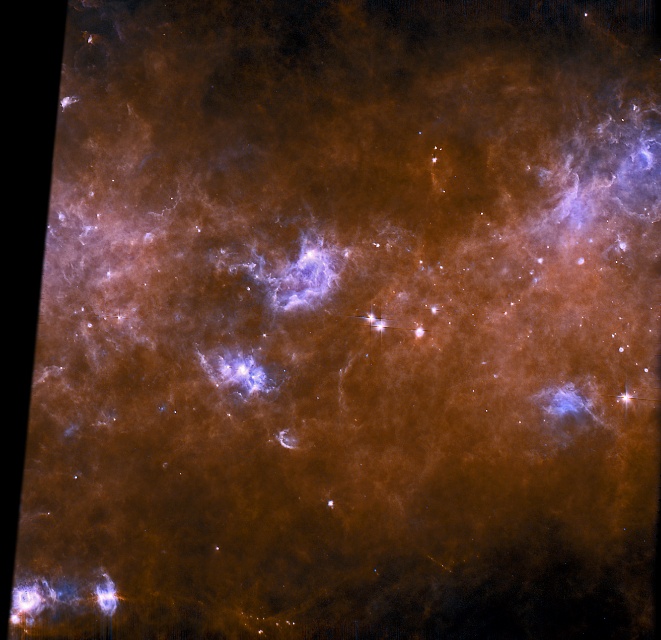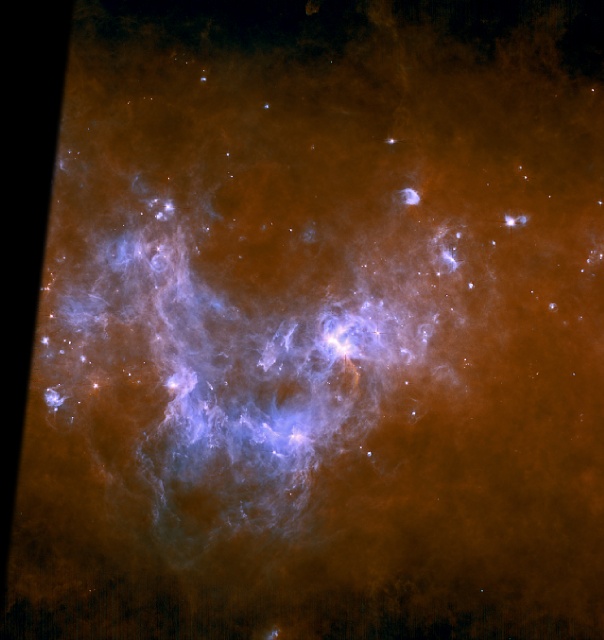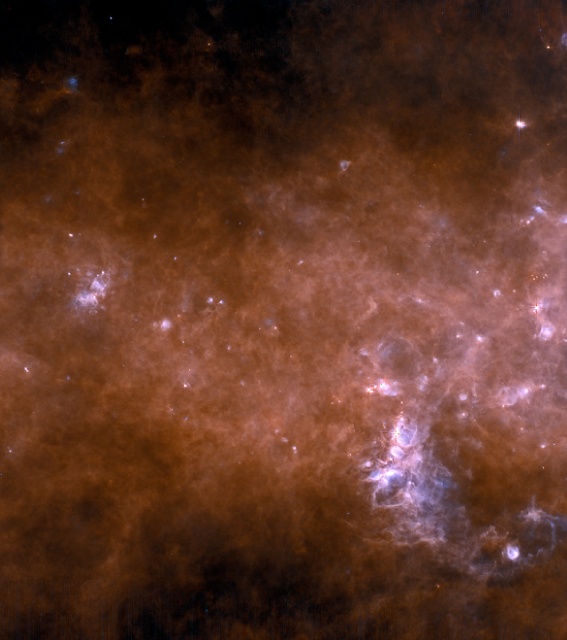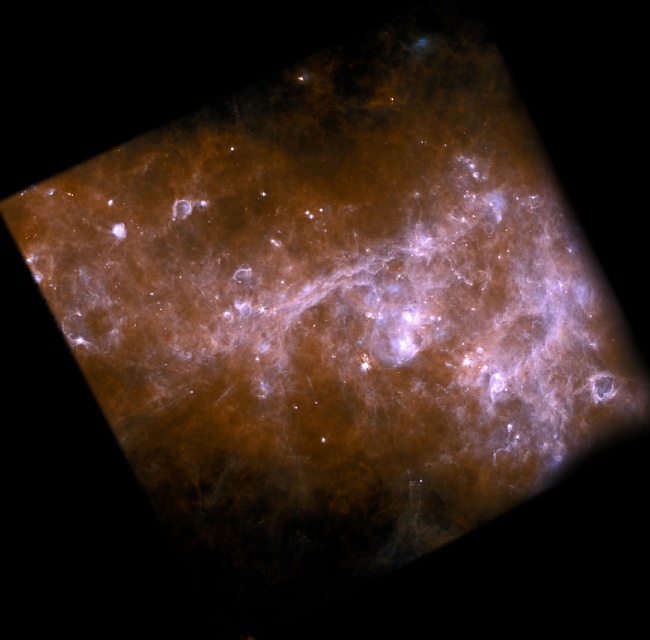| Basic Information | |
| What is this? | A view of a region looking at the gas and dust in the disc of our Galaxy, which we see edge on |
| Where is it in the sky? | In the constellation of Centaurus |
| How big is it? | The image is around 12 degrees across, or around 24 times the width of the Full Moon as seen from Earth |
| How far away is it? | Most of the gas and dust is thousands of light years away |
| What do the colours represent? | Bluer material is warmer, being heated by newly formed stars, while the redder regions are colder material much further from the star formation |
Downloads
See this object in:
This is a region of the disc of our Galaxy as seen by Herschel’s SPIRE and PACS cameras. Since we are located in the disc of the Galaxy we see it edge-on. The image shows an area of the sky that is around 12 degrees across and 2 degrees tall, or around 100 times the area of the Full Moon as seen from Earth. It is located in the constellation of Centaurus, and looks past the location of the Sun’s closest neighbour, Alpha Centauri – though Herschel doesn’t see stars, but instead the gas and dust between the stars. Most of the material in this image is thousands of light years away. The full region is shown below.

The image is composed of five regions, centred on a galactic longitude of 314o. The blue material shows gas and dust that is being heated by newly formed stars in the disc of our Galaxy, while the redder material is much colder, sometimes only around 10 degrees above abolsute zero. The Hi-Gal survey that this image is a part of is trying to investigate the properties of dust in our galaxy, such as how much there is and what role it plays in the formation of stars on the largest scales.
The five regions observed are visible below.

l=319o 
l=316o 
l=314o 
l=312o 
l=310o

